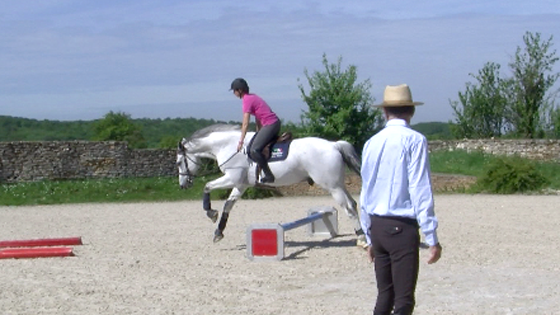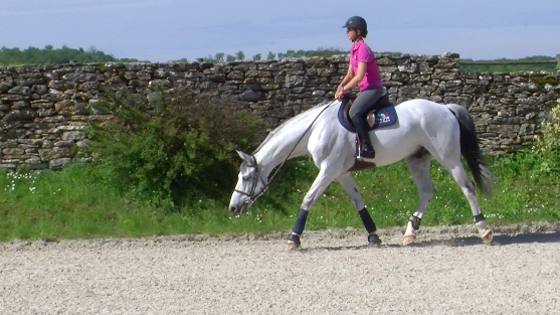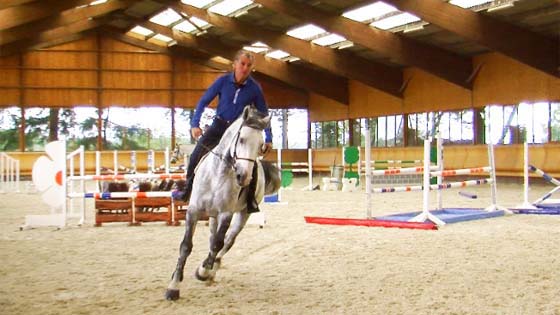Flat work and Gymnastic for the top-line:video 2

The goal of this session is to strengthen and increase the suppleness of the horse’s top line via an exercise of flexion and stretching.
The goal of this session is to strengthen and increase the suppleness of the horse’s top line via an exercise of flexion and stretching. The rider will position her horse’s neck back and forth between the poll being at the highest and a position of a full stretch with the horse having the nose close to the ground.
As Michel likes to explain, bringing a particular attention to the correct motion of the horse’s back, should be one of the rider’s top priority. We’re conscious about the fact that horses aren’t made to carry the weight of a rider on his back. Some conditioning work is essential if we want to keep them healthy and be able to get the most of their physical and mental ability. This conditioning consists, primarily of strengthening the muscle mass that is situated all along the spinal cord. Michel is using a very effective technique that he experimented during his long career as a high level international rider and horseman. This technique is based on the horse stretching his neck which consequently will stretch the entire top-line from the pole to the tail. This movement promotes also a work out of the abdominal muscles which are antagonistic muscles to the ones of the back.
During this session, Michel is teaching Marine and Norton, a 9 year old gelding. They start with some flat work at the 3 gaits. Marine tries to alternate the position of the horse’s neck between a full stretch and a position where the poll is being the highest point. Michel explains to the rider, the proper position to let the movement go through without hindering her horse, leading to favour the correct execution of the exercise. Any kind of stiffness or tension from the rider, especially during the transitions between both neck position, can hinder the stretching movement and by consequence the positive outcome of the exercise for the horse.
After the exercise has been successfully executed on flat work, Marine has to practice it on a cavaletti set-up. Again, Michel insists on the rider’s position which is the key for a successful exercise. As soon as the rider holds onto the reins or interferes with the horse’s mouth to find a spot or to find her balance, the horse doesn’t have the capability anymore to perform the stretching movement desired. The grid has been set up in a manner as to limit the rider’s influence and therefore to allow the horse freedom of movements.
At the end of the exercise, we can notice that Norton is able to jump the cavalettis while stretching his neck with a round quiet and rhythmical canter.


